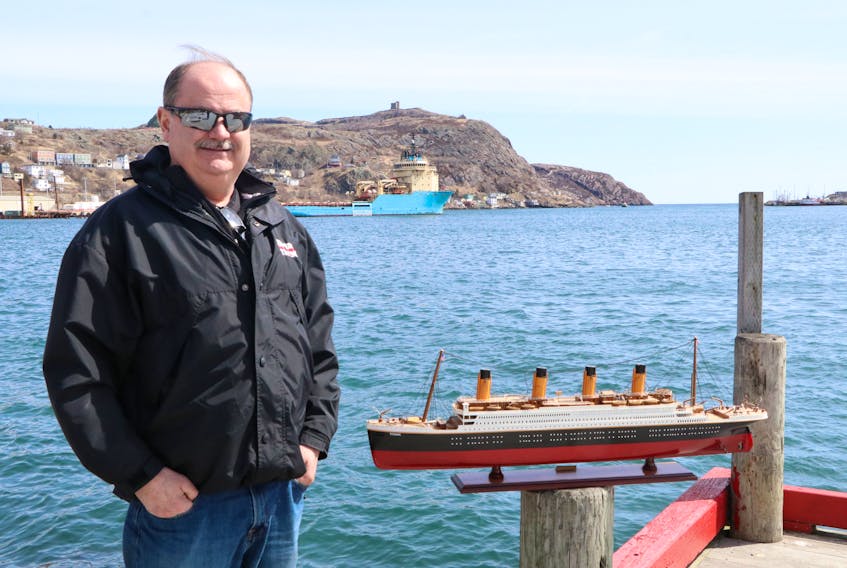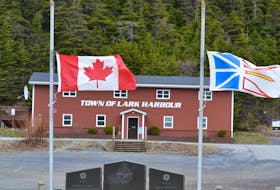How would you like a vacation adventure this summer that will see you dive to the wreck of the Titanic while playing the part of a member of a scientific crew surveying the wreck to determine its rate of deterioration?
For just US$105,129 per person, the adventure can be yours.
The price tag is said to be the equivalent of the value of a first-class passage on the maiden voyage in 1912, which was US$4,350.
Titanic Survey Expedition 2018 is being led by OceanGate Expeditions, a company headed by American Stockton Rush.
About 90 people have been booked for the expedition, which will run throughout the summer.
The customers — or “mission specialists” — will travel to St. John’s, obtain a one-day helicopter underwater egress training session (HUET), which is required for over-ocean helicopter flight, be flown to the dive ship at the Titanic wreck site by Cougar Helicopters and spend a week or so on the expedition ship doing actual duties. Then they’ll dive to the wreck in the submersible called “Titan.”
Larry Daley is the local contact for the expedition.
Daley is a Titanic logistics specialist and submersible diver, and dove to the Titanic wreck site on June 25, 2003 — a gift from movie director James Cameron and the Russian team aboard the RV Akademik Keldysh, the Russian scientific vessel that was used in the blockbuster movie made by Cameron in the late 1990s.
Daley said the submersible built by Rush’s company is the only privately owned deepsea submersible in the world.
“He’s built a deep submersible called Titan that’s presently, this week, being tested in deep water off the Bahamas for its final certification,” Daley said. “It’s the first of its kind. The platform is for five people — one pilot and four crew. Which will mean on a dive there will be the pilot, a technical person and three mission specialists.”
The Titanic, the famous British luxury liner, sank in the early hours of April 15, 1912 after striking an iceberg the evening before, southeast of Newfoundland during its maiden voyage from Southhampton, England, to New York.
More than 1,500 people died.
The wreckage lies about 12,500 feet below the surface, about 600 kilometres from Newfoundland. This weekend marks 106 years since that tragedy.
In 1985, a joint American-French expedition found the wreckage of the ship, leading to a number of expeditions to the site since then. Titanic Survey Expedition 2018, however, will be the first manned dives in 13 years.
“I was very fortunate to dive to the wreck in 2003,” Daley said. “I was one of about only 150 people in the world at that time to do it.”
Daley said it was quite a surreal experience to dive to that depth and to explore the wreck.
“By the time you got in the submersible and dropped from the ship, it was about four hours before reaching the wreck,” he said. “Then the pilots light up the deepsea lighting and you are sitting on the ocean floor looking at the bow.
“Then you fly up over the bow and the wheelhouse area. There are a series of memorials and plaques laid there by past expeditions and a vase with fake roses in it. So right away you know you are at a gravesite and you pay your respects. Then you continue the adventure. You fly over the bow section and midsection and the debris field, and then go to the stern and see the boilers laying on the seafloor.
“It was amazing. It’s hard to put into words.”
Daley said that during his dive, and other expeditions around that time, there was noticeable deterioration of the ship due to microbes eating the steel.
The expedition this summer will survey and mark the current state of the wreck. The information will help determine how long it will take before the wreck becomes unidentifiable as a ship.
“After several years of absence we are going to learn a lot more,” Daley noted. “There’s going to be sharp imagery, and OceanGate will be doing a high-definition digital survey of the wreck.”
OceanGate states the mission specialists will have the opportunity to be involved in the support of the submersible operations, including monitoring dive operations and reviewing videos and photos, and analyzing sonar data.
Daley says there is still room for two more mission specialists for this summer’s operations.
“There’s two seats available for the latter part of the season that I have packaged for OceanGate and have available for people who want to dive to the wreck,” he said. “Anyone interested can contact me.”









